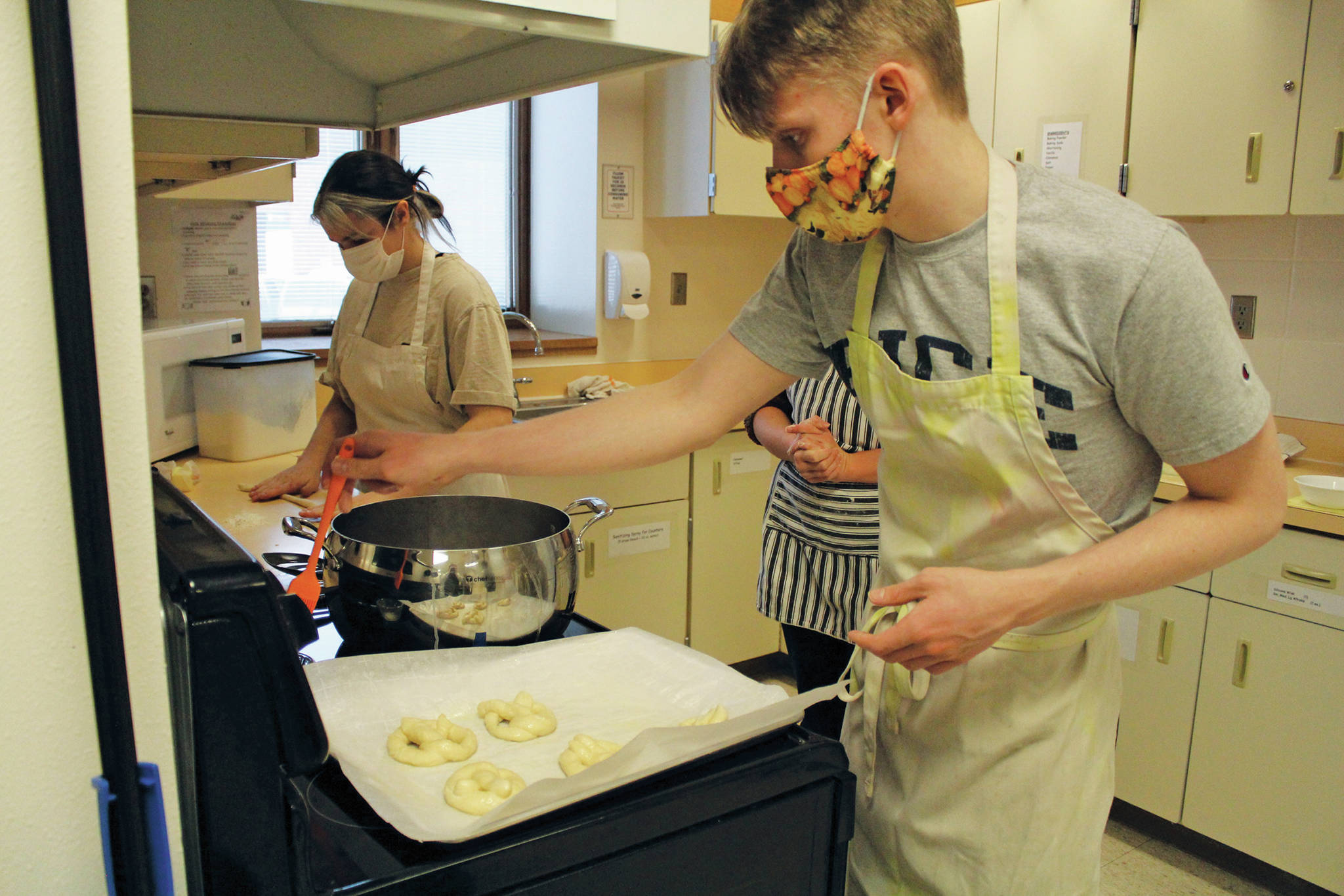Students at Homer High School recently got the chance to sign up for a different kind of education that the school has been lacking for a while: food and nutrition. Thanks to an existing teacher stepping into the role, the ovens are firing in the school once more.
Michelle Borland teaches social studies, U.S. history and government, as well as AP history and government classes. She’s a familiar face around the school, with 17 years of teaching under her belt. Borland is also the student council advisor. She described the annual student council retreat, during which the students have enjoyed using the school kitchens to make their own pizza.
The high school hasn’t had a foods and nutrition teacher for a number of years, but Borland remembers the foods class she took herself as a Homer High student. It was one of her most memorable classes, she said.
“I just thought it was such a shame that this space … wasn’t being utilized,” Borland said. “And that it was just kind of dormant due to budget cuts and staffing.”
So Borland stepped up and in early 2020 asked if she could add nutrition teacher to her list of titles. She said Principal Doug Waclawski jumped on the idea.
Cooking is one of Borland’s hobbies, and is something she says she’s always enjoyed. She doesn’t have professional training, but said she likes the idea of being able to take advantage of the food expertise that exists in Homer through field trips or guest speakers.
The onset of the COVID-19 pandemic, however, complicated how Borland could teach the class. It kept any field trips or guest presentations from happening.
“It’s been an interesting year because we haven’t really been able to eat the food that we’ve made,” she said.
On the other hand, the pandemic has driven home some of the basic tenants of safe food preparation: washing hands and wearing gloves. The students have been great about adhering to the safety precautions, Borland said.
Before the class could get started, Borland said a volunteer crew including members of her family and student aides had to come into the school to clean the class space and get it ready for students again.
“It really needed a deep cleaning everywhere,” she said.
The team even ousted a mouse that had made itself comfortable in the vacant space, and maintenance workers from the Kenai Peninsula Borough fixed the plumbing.
“It had this abandoned air about it, and now it kind of feels like it’s come back to life,” Borland said of the class space.
Now that the students have been in the kitchen cooking with Borland for some time, she’s helped expand their education to include everything from kitchen safety to how to tie a pretzel.
So far, the current foods class has covered kitchen safety and sanitation, reading recipes, measuring techniques, quick breads, dairy, pastries and a number of other cooking basics. Borland said she’s trying to go through a basic introduction to the main food types and main kitchen techniques and procedures.
The class is fun for Borland, she said, and gives her a chance to see her students in a different, more relaxed venue compared to some of her other classes.
The foods class is about more than fun and acquiring basic cooking skills. It’s also setting students up with work experience for their future. In last semester’s class, every student came away with a state of Alaska food worker card. Borland coordinated with the state and the Alaska Department of Labor and Workforce Development to have the students take the test.
“And so kids are able to get kind of real life, hands on job training skills,” she said.
These skills are valuable, but even more so in a tourism-driven town like Homer, Borland said, where many summer jobs that students can get are likely in the food service industry.
“I just hope that they get that sense of confidence and self sufficiency,” she said of the students.
Borland is also grateful for the in-person, hands on foods class. The more involved, physical courses are the ones that don’t necessarily translate well to a virtual setting, she said.
“I think this actually became abundantly clear in the last year for me … you can move a lot of classes online, but it’s hard to move those foods classes, or those arts classes, or those music classes, and those are the classes that people rally need public school for,” Borland said.



